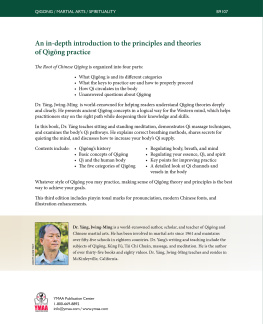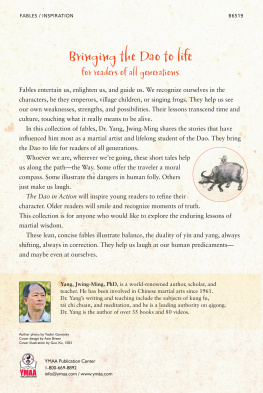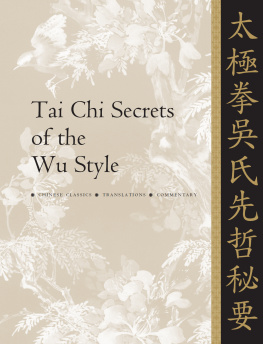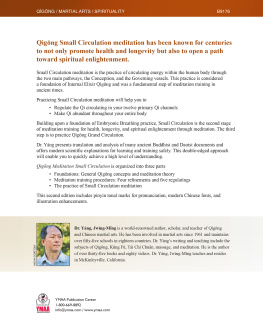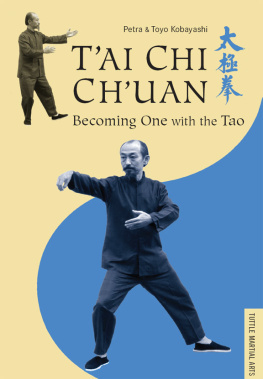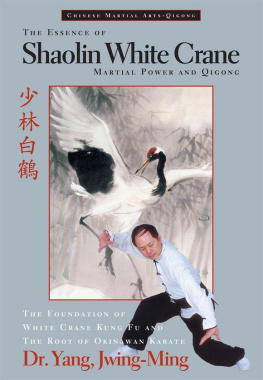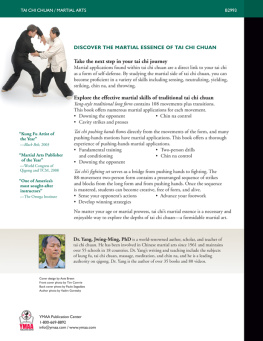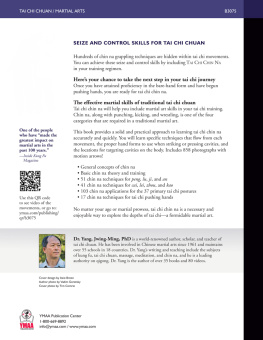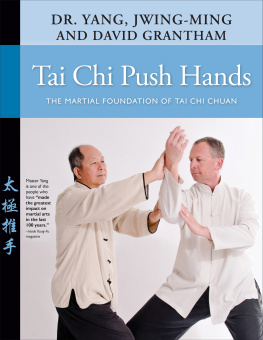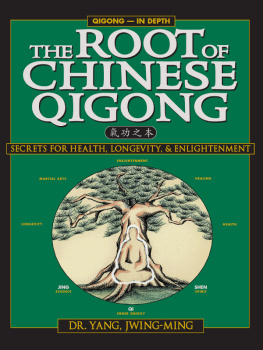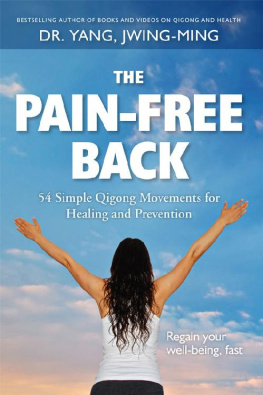Jwing-Ming Yang - Tai Chi Chuan Martial Power: Advanced Yang Style
Here you can read online Jwing-Ming Yang - Tai Chi Chuan Martial Power: Advanced Yang Style full text of the book (entire story) in english for free. Download pdf and epub, get meaning, cover and reviews about this ebook. year: 2015, publisher: YMAA Publication Center, Inc., genre: Religion. Description of the work, (preface) as well as reviews are available. Best literature library LitArk.com created for fans of good reading and offers a wide selection of genres:
Romance novel
Science fiction
Adventure
Detective
Science
History
Home and family
Prose
Art
Politics
Computer
Non-fiction
Religion
Business
Children
Humor
Choose a favorite category and find really read worthwhile books. Enjoy immersion in the world of imagination, feel the emotions of the characters or learn something new for yourself, make an fascinating discovery.

- Book:Tai Chi Chuan Martial Power: Advanced Yang Style
- Author:
- Publisher:YMAA Publication Center, Inc.
- Genre:
- Year:2015
- Rating:5 / 5
- Favourites:Add to favourites
- Your mark:
- 100
- 1
- 2
- 3
- 4
- 5
Tai Chi Chuan Martial Power: Advanced Yang Style: summary, description and annotation
We offer to read an annotation, description, summary or preface (depends on what the author of the book "Tai Chi Chuan Martial Power: Advanced Yang Style" wrote himself). If you haven't found the necessary information about the book — write in the comments, we will try to find it.
Tai Chi Chuan Martial Power: Advanced Yang Style — read online for free the complete book (whole text) full work
Below is the text of the book, divided by pages. System saving the place of the last page read, allows you to conveniently read the book "Tai Chi Chuan Martial Power: Advanced Yang Style" online for free, without having to search again every time where you left off. Put a bookmark, and you can go to the page where you finished reading at any time.
Font size:
Interval:
Bookmark:

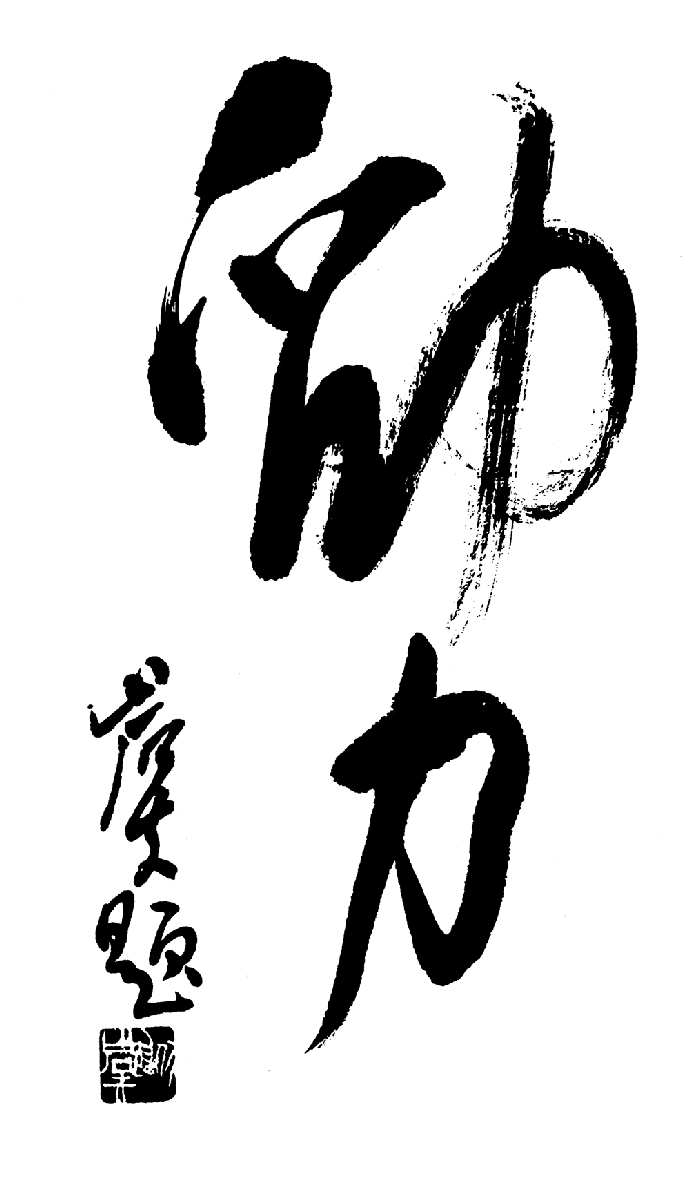
ADVANCED YANG STYLE
YMAA Publication Center, Inc.
Wolfeboro, NH USA
YMAA Publication Center, Inc.
Main Office:
PO Box 480
Wolfeboro, New Hampshire, 03894
1-800-669-8892
ISBN: 9781594392948 (print) ISBN: 9781594392962 (ebook)
All rights reserved including the right of reproduction in whole or in part in any form.
3rd edition. Copyright 1986, 1996, 2015 by Yang, Jwing-Ming
Copyedit by Dolores Sparrow and T. G. LaFredo
Caption editing by Leslie Takao
Indexing by Dolores Sparrow
Proofreading by Sara Scanlon
Cover design and drawings by Axie Breen
Photos by YMAA unless noted otherwise
Publishers Cataloging in Publication
Yang, Jwing-Ming, 1946
Tai chi chuan martial power : advanced Yang style / Dr. Yang, Jwing-Ming. -- 3rd ed. -- Wolfeboro, NH USA : YMAA Publication Center, [2015]
pages ; cm.
ISBN: 978-1-59439-294-8 (print) ; 978-1-59439-296-2 (ebook)
Revised edition of: Tai chi theory & martial power. 2nd ed., YMAA, c1996.
Some Chinese terms given in Chinese characters.
Includes bibliography and index.
Contents: General introduction -- Qi and Taijiquan -- Jing martial power -- Conclusion.
Summary: The study of tai chi power (tai chi jing) is the second level in the study of tai chi as a martial art. This book focuses on the theory and principles of tai chi's amazing power (jing), which will lead to deeper martial skills, proper body alignment, rooting, and energy (qi) manifestation. It provides a solid and practical approach to learning with multiple photographs and detailed instructions for each technique.--Publisher.
1. Tai chi. 2. Martial arts--Training. 3. Qi (Chinese philosophy) 4. Qi gong. 5. Martial arts--Health aspects. 6. Vital force. 7. Force and energy. 8. Martial arts--Psychological aspects. I. Title. II. Tai chi theory & martial power.
| GV504 .Y365 2015 | 2015935964 |
| 796.815/5dc23 | 1504 |
The practice, treatments, and methods described in this book should not be used as an alternative to professional medical diagnosis or treatment. The author and the publisher of this book are NOT RESPONSIBLE in any manner whatsoever for any injury or negative effects that may occur through following the instructions and advice contained herein.
It is recommended that before beginning any treatment or exercise program, you consult your medical professional to determine whether you should undertake this course of practice.
Warning: While self-defense is legal, fighting is illegal. If you dont know the difference, youll go to jail because you arent defending yourself. You are fightingor worse. Readers are encouraged to be aware of all appropriate local and national laws relating to self-defense, reasonable force, and the use of weaponry, and to act in accordance with all applicable laws at all times. Understand that while legal definitions and interpretations are generally uniform, there are smallbut very importantdifferences from state to state and even city to city. To stay out of jail, you need to know these differences. Neither the author nor the publisher assumes any responsibility for the use or misuse of information contained in this book.
Nothing in this document constitutes a legal opinion, nor should any of its contents be treated as such. While the author believes everything herein is accurate, any questions regarding specific self-defense situations, legal liability, and/or interpretation of federal, state, or local laws should always be addressed by an attorney at law.
When it comes to martial arts, self-defense, and related topics, no text, no matter how well written, can substitute for professional hands-on instruction. These materials should be used for academic study only.
This ebook contains Chinese translations of many terms and may not display properly on all e-reader devices. You may need to adjust your Publisher Font Default setting.
It is with great pleasure that I introduce the reader to Dr. Yang, Jwing-Mings new book on taijiquan. In truth, I had come to know Dr. Yang first through his excellent books on the Chinese martial arts. Although we had corresponded, it was not until June of 1985 that I first met Dr. Yang in person. I first met him at the National Chang, San-feng Festival held at the Taiji Foundations training grounds in Warwick, New York. Dr. Yang had graciously accepted my invitation to teach a workshop for the numerous taiji practitioners who had gathered together for the festival. It was at that time that I had the opportunity to see for myself that Dr. Yangs ability was of the same high caliber as his written treatises.
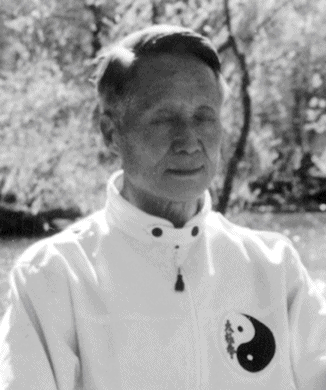
Many practitioners today are satisfied to merely run through the choreography of their particular taiji form without putting any content or effort into their practice. While a routine run-through of taiji may be enjoyable, it will not lead to progress. A hollow form will produce neither health nor martial benefits.
The practitioner who wishes to achieve progress in taiji must be willing to put forth great efforts to master the necessary principles, and to practice diligently and with a sense of purpose, in order to get results. Taiji must be a blend of both yin () and yang (). Empty form alone will produce nothing. In Dr. Yangs first book the external, martial aspects of taijiquan were clearly presented. In Dr. Yangs present work, he has made a clear and detailed presentation of the more inner mechanics of taijiquan.
If the taiji practitioner is willing to invest effort into developing his internal power and awareness, his taiji form and applications will improve. Not everyone today has personal access to accomplished masters of taijiquan. Furthermore, available written materials related to the development of internal energy and force have often been difficult to understand.
For these reasons I urge the reader to pay careful attention to this book. However, as Dr. Yang points out, reading alone will accomplish little. It is up to the individual practitioner to put these concepts into practice. In this regard, the reader is very fortunate to have Dr. Yang for a guide.
Jou, Tsung-Hwa ()
(July 13, 1917August 3, 1998)
Warwick, New York, June 9, 1985
Taijiquan has become a popular exercise, not only in China but also in many other countries around the world. Throughout most of its history the art was kept secret and only taught to family members and trusted students. Since the beginning of this century, when the art was first opened up to the public, many people have taken advantage of taijis ability to improve health and cure a number of illnesses. In our present hectic society, people are looking for a way to release daily pressures, calm their minds, and relax their bodies. Taiji has been shown to be an excellent way to achieve this.
In spite of the popularity of taijiquan, in China, Taiwan, or other parts of the world, the art is gradually becoming incomplete. Because most taiji practitioners are more interested in health than in self-defense, the deeper aspects of the art have been gradually ignored. Many people who have practiced taijiquan for quite a few years still do not understand its theories and principles. They may not know how to coordinate their breathing with the forms, and many do not understand the relationship of taiji and qigong. Some do not even know what qi is, or how to generate it through taiji practice and still meditation. Because of this, their art remains superficial. Furthermore, the original, major part of taijiquanthe martial applicationis dying out. The reader should understand that taiji was created as a martial qigong art. The self-defense applications remain a necessary part of the wholeness of taijiquan. Its principles and techniques are unique in martial society.
Font size:
Interval:
Bookmark:
Similar books «Tai Chi Chuan Martial Power: Advanced Yang Style»
Look at similar books to Tai Chi Chuan Martial Power: Advanced Yang Style. We have selected literature similar in name and meaning in the hope of providing readers with more options to find new, interesting, not yet read works.
Discussion, reviews of the book Tai Chi Chuan Martial Power: Advanced Yang Style and just readers' own opinions. Leave your comments, write what you think about the work, its meaning or the main characters. Specify what exactly you liked and what you didn't like, and why you think so.

